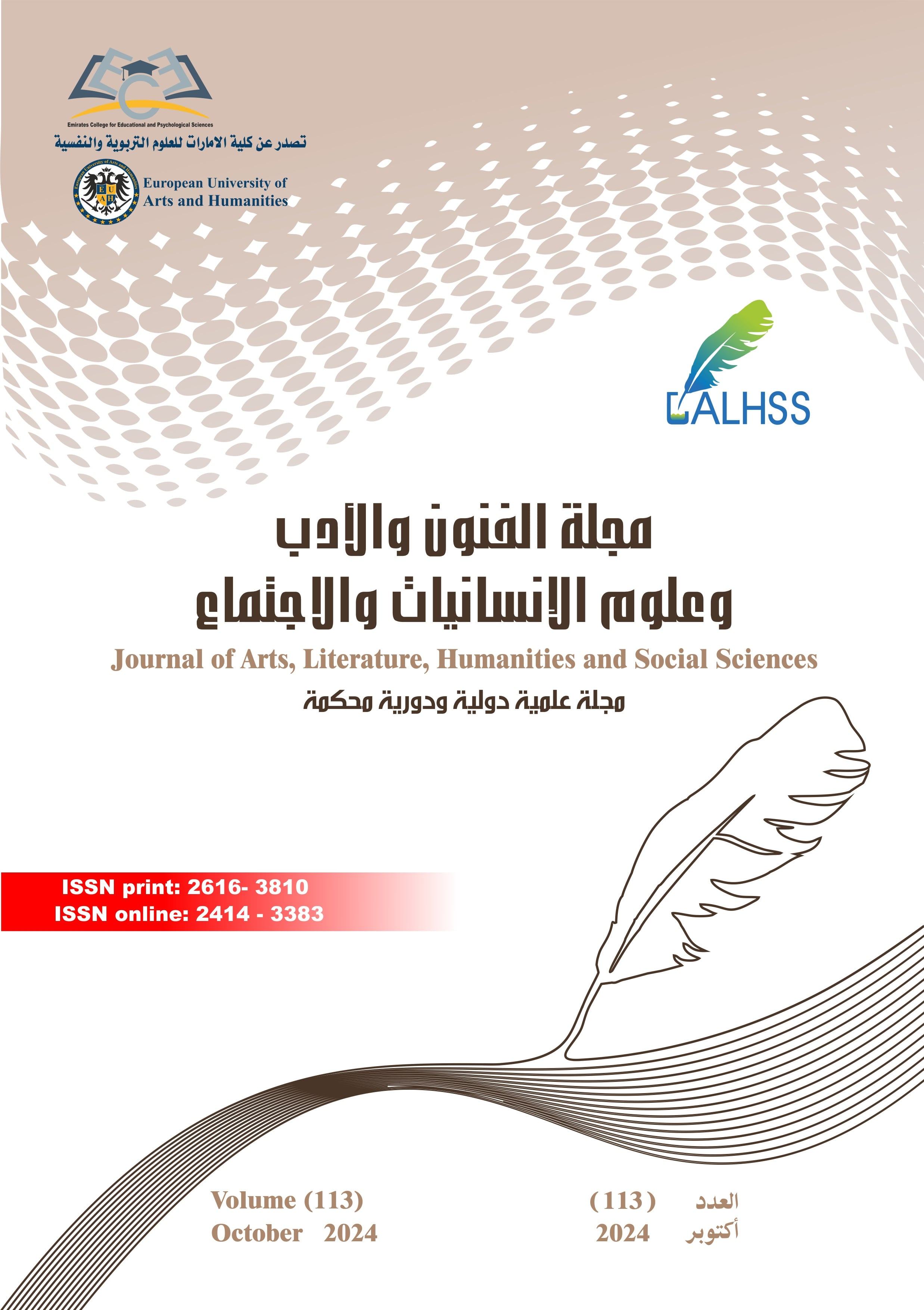The Impact of Silhouette Art in Storytelling on Late Childhood Children
Abstract
The present research aims to explore the impact of silhouette art on storytelling for children in late childhood, with an application to the traditional Arab tale " The Envious Man and the Eye Gouger." The study seeks to assess how the aesthetic values of silhouette art, characterized by its simple visual style and ease of execution, influence children’s encouragement to read, understand culture, engage emotionally, and comprehend storytelling. Additionally, it examines how this art contributes to the educational and cognitive development of the child’s personality. To achieve the study’s objective, the descriptive-analytical method was employed to examine silhouette art in terms of its concept, origin, and characteristics. The study also investigates the importance of illustrations during childhood and explores the perceptual and cognitive characteristics of children in late childhood. A practical experiment was conducted on a sample of 61 girls aged between 9 and 12 years, using a questionnaire administered through personal interviews. The findings revealed promising emotions from the children, expressed through their enthusiasm for reading more Arab heritage stories illustrated with innovative techniques such as silhouette art. The study showed that illustrative drawings using silhouette art contribute to enhancing emotional engagement with characters, aiding in recalling events, and understanding moral messages, making it an effective tool in storytelling. Thus, the aesthetic values of silhouette art can be employed in book illustrations to motivate children to read, offering a valuable addition to educational curricula and traditional Arab stories. The study recommends conducting future research to explore the impact of silhouette art's aesthetic values in other literary and educational contexts, as well as examining its effects on different age groups.
References
2. مصطفى ناصف (1989). الإبداع العام والخاص. عالم المعرفة. تم استرجاعه من https://www.alarabimag.com
3. ياكوف بيريلمان (1977). الفيزياء المسلية (الجزء الاول ). تم استرجاعه من https:// kutubypdf.com
4. الحصري، أ. ك. (2004). مستويات قراءة الرسوم التوضيحية ومدى توافرها في الأسئلة المصورة بكتب وامتحانات العلوم بالمرحلة الإعدادية. المجلة المصرية للتربية العلمية.
5. جبر، ر. ش. (2019). تقنيات الصورة الرقمية ودورها في الرسوم التوضيحية في الجرافيك الرقمي. مجلة لارك للفلسفة واللسانيات والعلوم الاجتماعية، (34)، يوليو.
6. عبدالعال، ر. ر. (2017). تصور مقترح لبعض القصص المصورة لأميرات ديزني وأثره في تنمية السلوك البيئي المسؤول ووجهة الضبط الداخلية لدى تلميذات الصف الثاني الإعدادي. مجلة الجمعية التربوية للدراسات الاجتماعية.
7. بهجات، ر. ح. (2023). تأثير فن الصور الظلية "Silhouette" على الرسوم التوضيحية في قصص الأطفال. بحوث في التربية الفنية والفنون، 23(1).
8. الأحمدي، س. ن.، الردادي، س. س.، & الرحيلي، أ. م. (2020). تحليل محتوى كتب العلوم بالمرحلة الابتدائية في المملكة العربية السعودية. مجلة العلوم التربوية والنفسية، (28).
9. الشرايده، ع. م. (2018). درجة توافر معايير التصميم الجرافيكي في بناء قصص الأطفال المطبوعة. جامعة الشرق الأوسط – كلية العمارة والتصميم.
10. السعيد، ف. ع.، الشطي، م. م.، & البلام، إ. م. (2019). التصوير التضادي الزخرفي كمدخل لإثراء الأسطح الخزفية. مجلة الفنون التشكيلية والتربية الفنية، (3)، يوليو.
11. فلفلان، م. ج. (2020). التلفزيون وتأثيره على رسوم الأطفال في مرحلة الطفولة المتأخرة من 9 إلى 12. مجلة البحث العلمي في التربية، جامعة عين شمس، (21)، مارس.
12. عسقول، م. ع. (2002). تقويم الرسوم التوضيحية في كتاب العلوم للصف الأول من التعليم الأساسي. مجلة الجامعة الإسلامية للبحوث الإنسانية، الجامعة الإسلامية بغزة، (2).
13. محجوب، م. م. (2017). دور الرسومات التوضيحية في تصميم الكتاب المدرسي وإخراجه لمرحلة التعليم الأساسي: الأسس والمعايير. دراسات تربوية، المركز القومي للمناهج والبحث التربوي.
14. أبو طالب، م. س. (1990). علم النفس الفني. وزارة التعليم والبحث العلمي – كلية الفنون الجميلة، بغداد.
15. حمود، ن. ع. (2015). عادات مشاهدة الطفل العراقي في عمان للإعلانات التلفزيونية الموجهة إلى الأطفال وأنماطها. جامعة الشرق الأوسط – كلية الإعلام.
16. Doblin, J. (1980). A Structure for Nontextual Communications. in Processing of Visible Language 2, Kolers, P. A., Wrolstad, M. E., and Bouma, H. (eds.), Plenum Press, New York, pp. 89–111.
17. Abdullai Lateef(2019). silhouette and graphics illustration
Copyright (c) 2024 نزيهة محمد سعيد علي مدرس

This work is licensed under a Creative Commons Attribution-ShareAlike 4.0 International License.



